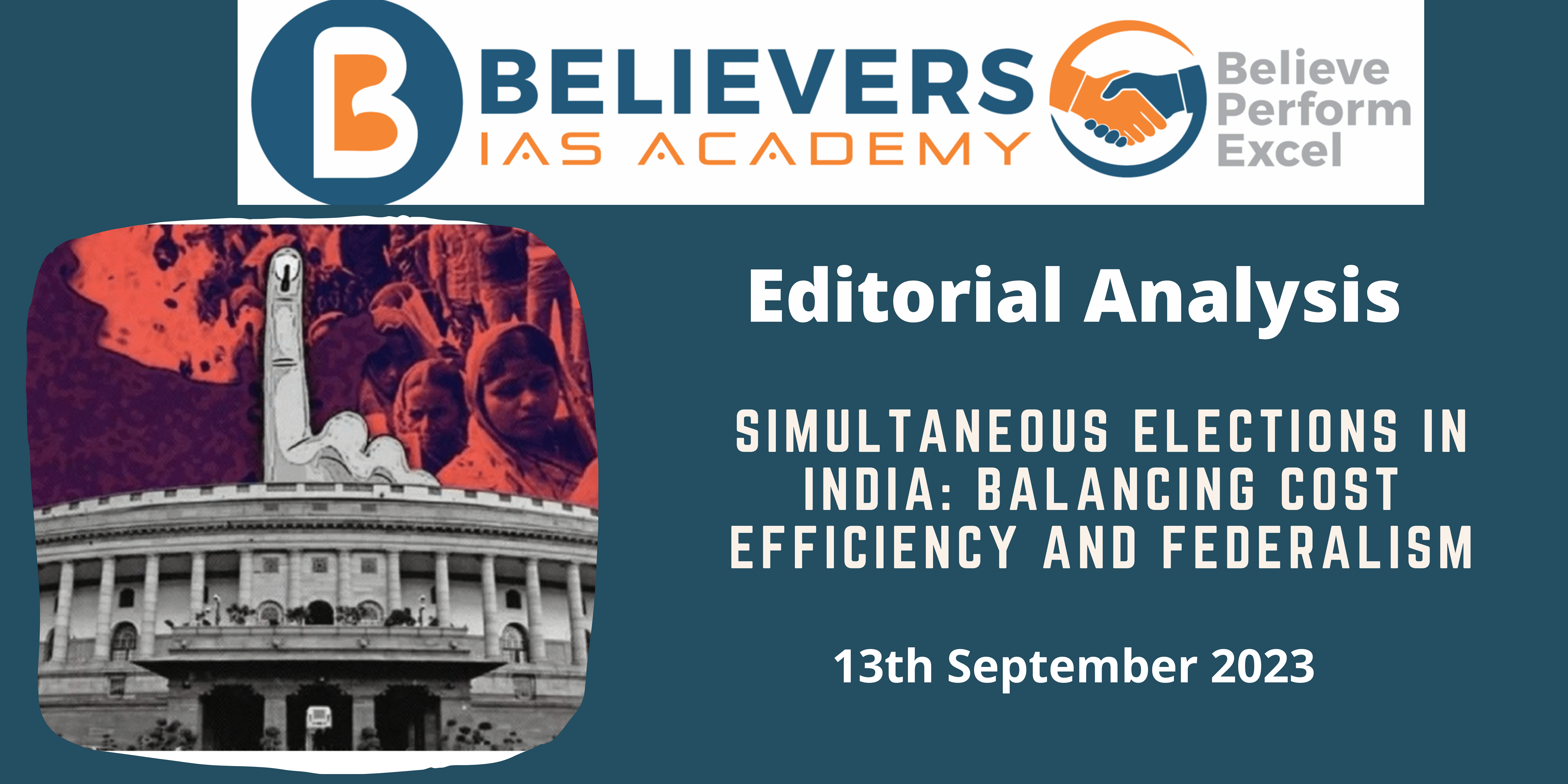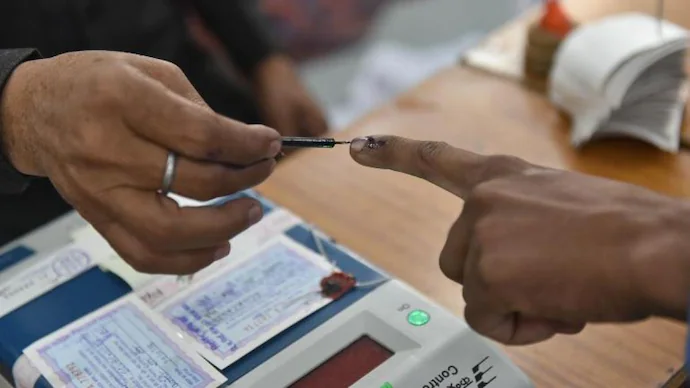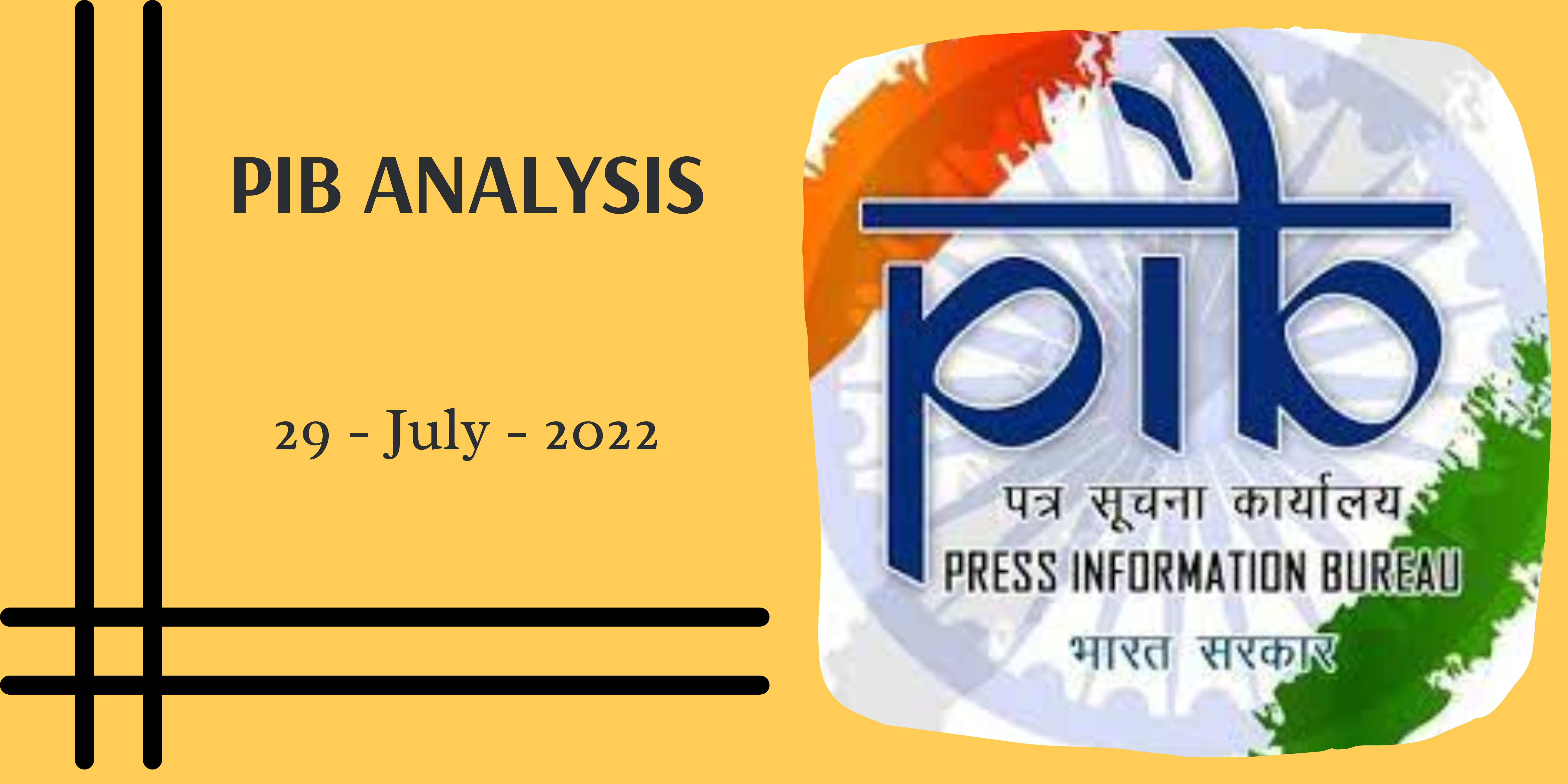Simultaneous Elections in India: Balancing Cost Efficiency and Federalism
Context:
The concept of simultaneous elections in India, which has been proposed by the Union government and is part of the Bharatiya Janata Party’s manifesto has an impact on existing legislative assemblies and the federal three-tier system.
Relevance:
GS-02 (Government policies and interventions)
Prelims:
- One Nation One Election
- ECI
- Basic structure of the Constitution
- Article 368
Main Question:
What are the implications of conducting simultaneous elections on India’s legislative assemblies and the federal three-tier system, and how does it affect federalism? (150 words)
Dimensions of the Article:
- The Proposal for Simultaneous Elections
- Impact on Legislative Assemblies
- Cost-Saving and Economic Impact
- Complexity of India’s Governance Tiers
- The Role of Each Tier
- Impact on Federalism
- The Need for a Federal Perspective
The Proposal for Simultaneous Elections:
- The Union government has established a committee, led by former President Ramnath Kovind, to explore the feasibility of conducting simultaneous elections for various tiers of governance, including the Lok Sabha, Legislative Assemblies, municipalities, and panchayats.
- This proposal has been under discussion for the past few years.
Impact on Legislative Assemblies:
- The next Lok Sabha election is scheduled before June 16, 2024. If simultaneous elections are implemented, the terms of most Legislative Assemblies would be curtailed.
- Only four states (Andhra Pradesh, Arunachal Pradesh, Odisha, and Sikkim) have their election cycles aligned with the Lok Sabha.
- If simultaneous elections are held in 2029, Assembly terms in many states would need to be curtailed or extended.
Cost-Saving and Economic Impact:
- Proponents of simultaneous elections argue that it would be a cost-saving measure. A 2018 Law Commission report suggested that election expenses for Lok Sabha and Assembly elections are similar, and conducting them together would halve the costs.
- However, this perspective overlooks the broader economic impact of elections on sectors like transportation, printing, media, and infrastructure.
Complexity of India’s Governance Tiers:
- Many reports supporting simultaneous elections fail to consider the intricate nature of India’s legislative and governance tiers.
- India elects a substantial number of representatives across various levels, including 543 Lok Sabha representatives, over 4,100 Assembly legislators, representatives for 89,194 urban wards, and nearly 31.89 lakh elected panchayat representatives across three tiers of the Panchayat system. Each tier has distinct roles and responsibilities.
The Role of Each Tier:
- Every tier of governance serves specific purposes. For instance, local ward representatives address local issues like garbage management, while MPs and MLAs deal with broader matters related to the Union government and the State.
- Simultaneous elections could consolidate all these issues into one mandate for voters.
Impact on Federalism:
- Conducting simultaneous elections has implications for federalism and the three-tier governance structure in India.
- It might undermine the unique roles and responsibilities of each tier and centralize power, potentially eroding federalism.
The Need for a Federal Perspective:
- The committee examining simultaneous elections should thoroughly evaluate the federal aspects of Indian democracy before proceeding with the idea.
- A comprehensive understanding of how such a change would affect the federal structure of the country is essential.
Way Forward:
- While the proposal for simultaneous elections aims to reduce costs, it must be considered in the context of India’s complex governance tiers. The sheer number of representatives at different levels underscores the importance of maintaining distinct roles for each tier.
- Consolidating elections could harm federalism and the unique responsibilities of local governance. Therefore, before pursuing simultaneous elections, a thorough examination of their impact on federalism and governance tiers is crucial to ensure the preservation of India’s democratic structure




